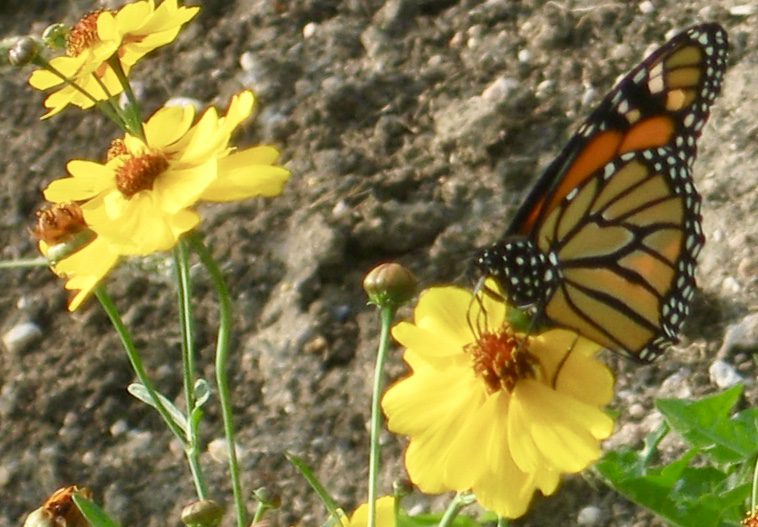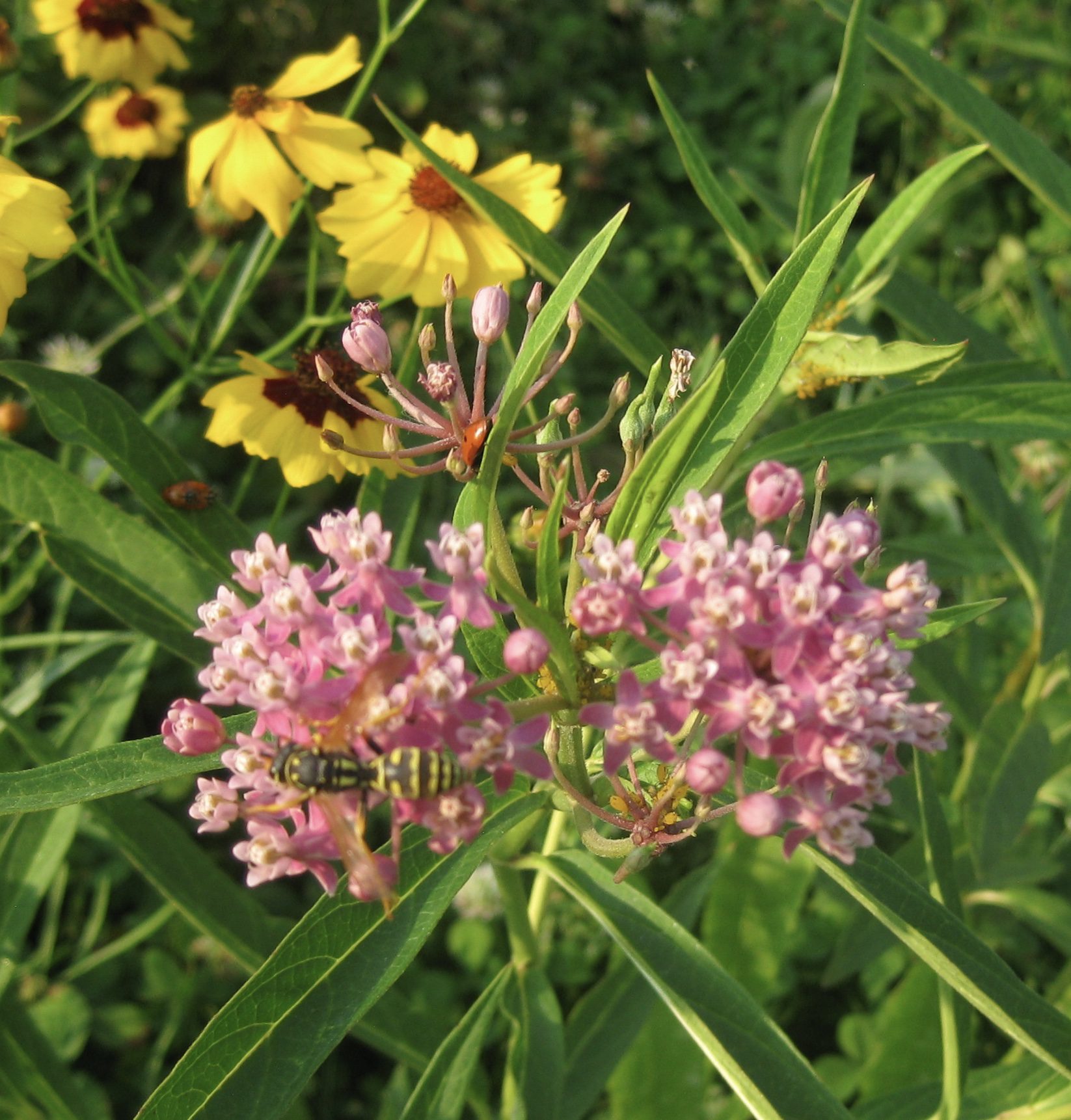Nancy Loomis, the project leader for the Community Wildlife Habitat Project, West Edge District, is returning to our blog for another post in her series about the “Laramie County Library Water-wise and Pollinator Bio-retention System (Project).” Read below to learn about Monarch butterflies, and how some of the floral additions that were made to the library’s detention pond are helping their population flourish!
 In recent years a tremendous amount of information on the decreasing population of the Monarch butterfly has been made available, and people have been encouraged to plant milkweed (plants in the Asclepias family), because milkweeds are the host plants for Monarch larvae.
In recent years a tremendous amount of information on the decreasing population of the Monarch butterfly has been made available, and people have been encouraged to plant milkweed (plants in the Asclepias family), because milkweeds are the host plants for Monarch larvae.
Two different milkweeds have been planted in the library detention pond, Asclepias tuberosa (butterfly weed) with an orange flower and Asclepias incarnata (swamp milkweed) with a pink flower. Some of these plants can be found blooming in the bottom of the detention pond.

It’s also very important to note that Laramie County is located on the Monarch’s fall migratory route, so when deciding which plantings should go in the detention pond, it was crucial to include late blooming plants that would supply an abundance of nectar to adult Monarchs passing through on their long journey. This means supplying a variety of plants that bloom from early August into October.
 Several late blooming native asters and goldenrods have been planted in the library project, along with a variety of rabbitbrush. All of these plants are relished by Monarchs. These large butterflies have started to visit the flowers in the library project area and will continue to fly in until October. Two benches are available on the north side of the project area for you to sit and enjoy the show. If you’re lucky, you may also be visited by migrating hummingbirds!
Several late blooming native asters and goldenrods have been planted in the library project, along with a variety of rabbitbrush. All of these plants are relished by Monarchs. These large butterflies have started to visit the flowers in the library project area and will continue to fly in until October. Two benches are available on the north side of the project area for you to sit and enjoy the show. If you’re lucky, you may also be visited by migrating hummingbirds!
Nancy Loomis
Project Leader: Community Wildlife Habitat Project, West Edge District
